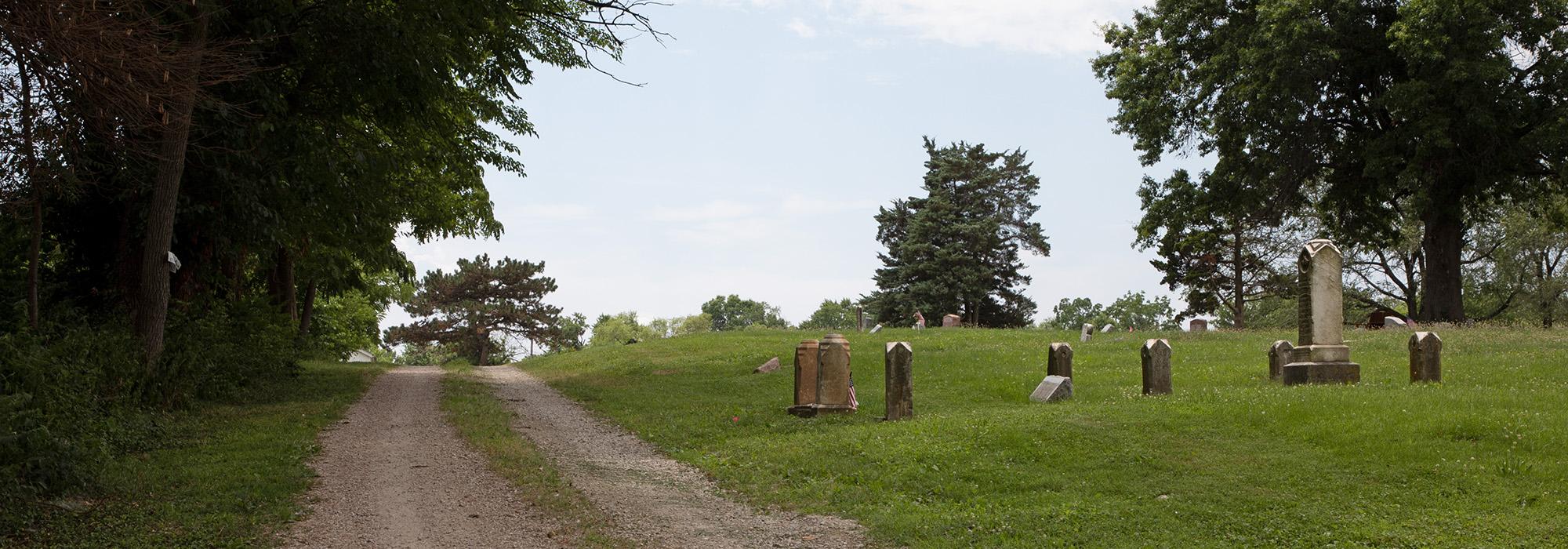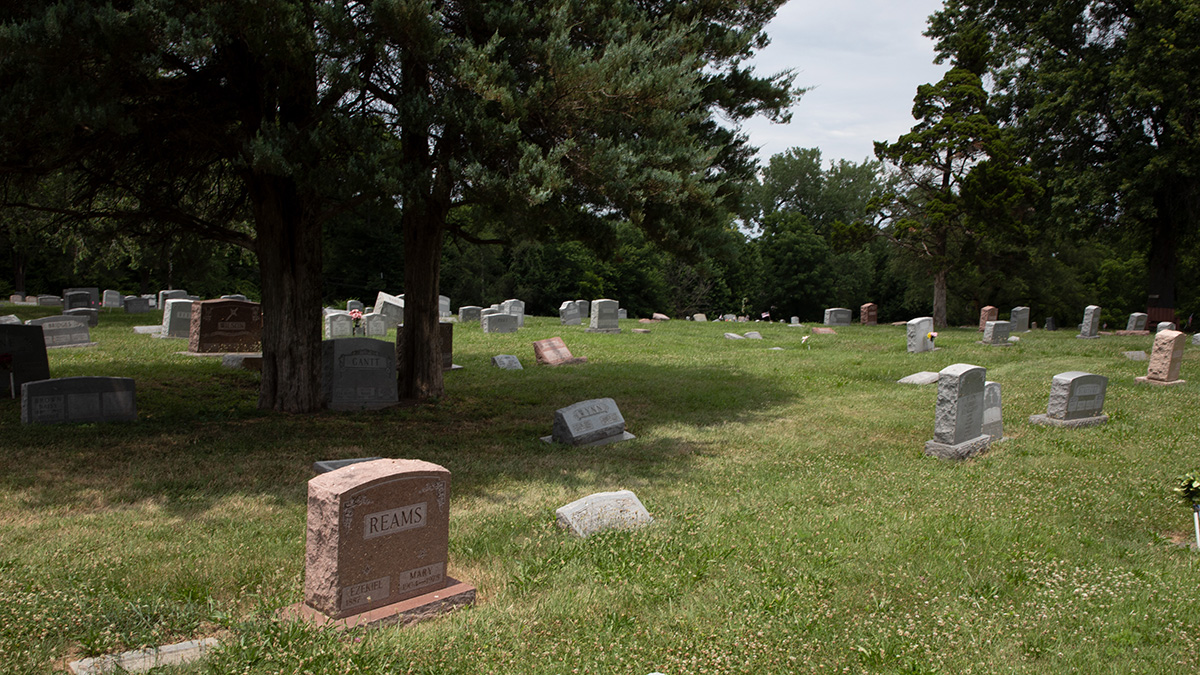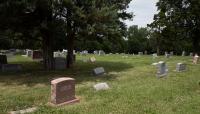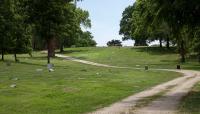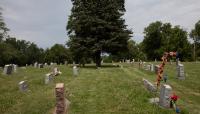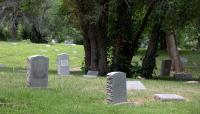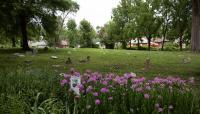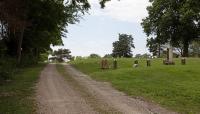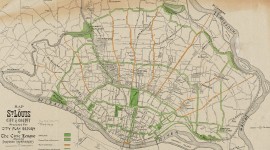Founded in the late 1800s within the then-rural context of St. Louis County, this burial ground was established as the first non-denominational cemetery devoted specifically to serving St. Louis’ African American population in the post-Civil War era. In January of 1874 Herman Krueger, a German immigrant and former superintendent of the nearby St. Peter’s Cemetery, designated a ten-acre plot of land for members of the city’s African American community to reliably and affordably lay their loved ones to rest. Within just six years of its founding, the site expanded to its current 32 acres, retaining its location directly off St. Louis Avenue, east of St. Peter’s Cemetery.
The T-shaped site is located within the Hillsdale neighborhood, which grew to surround the area as suburban expansion increased during the early 1900s. Concrete planters and monolithic granite and limestone tombstones are organized on either side of the slightly deviating access road that runs diagonally eastward from the cemetery’s main axis. These lines of headstones are further paired with a series of winding paths, which navigate throughout the heavily wooded regions on either end of the east-west axis, developing a landscape that is equal in its distribution of open parkland and wooded terrain. Since its establishment, the cemetery has become the resting place for more than 50,000 individuals, including veterans of both World Wars, musicians, and performers such as jazz guitarist Grant Green and vaudeville performer Harry Fiddler, and Harriet Scott, plaintiff along with her husband Dred Scott in the landmark 1857 Dred Scott v. Sandford case. Listed in the National Register of Historic Places in 2004, the cemetery began operating under the Greenwood Cemetery Preservation Association in 2016.



